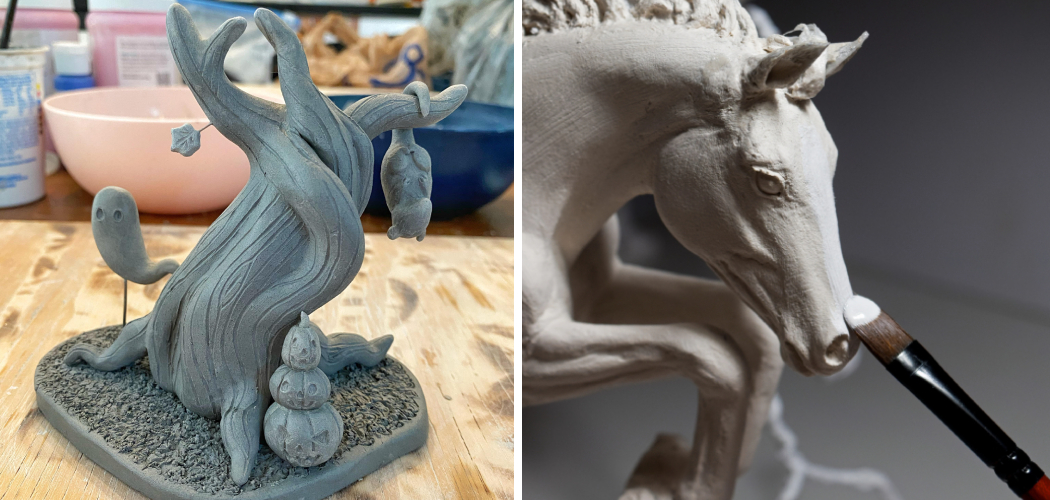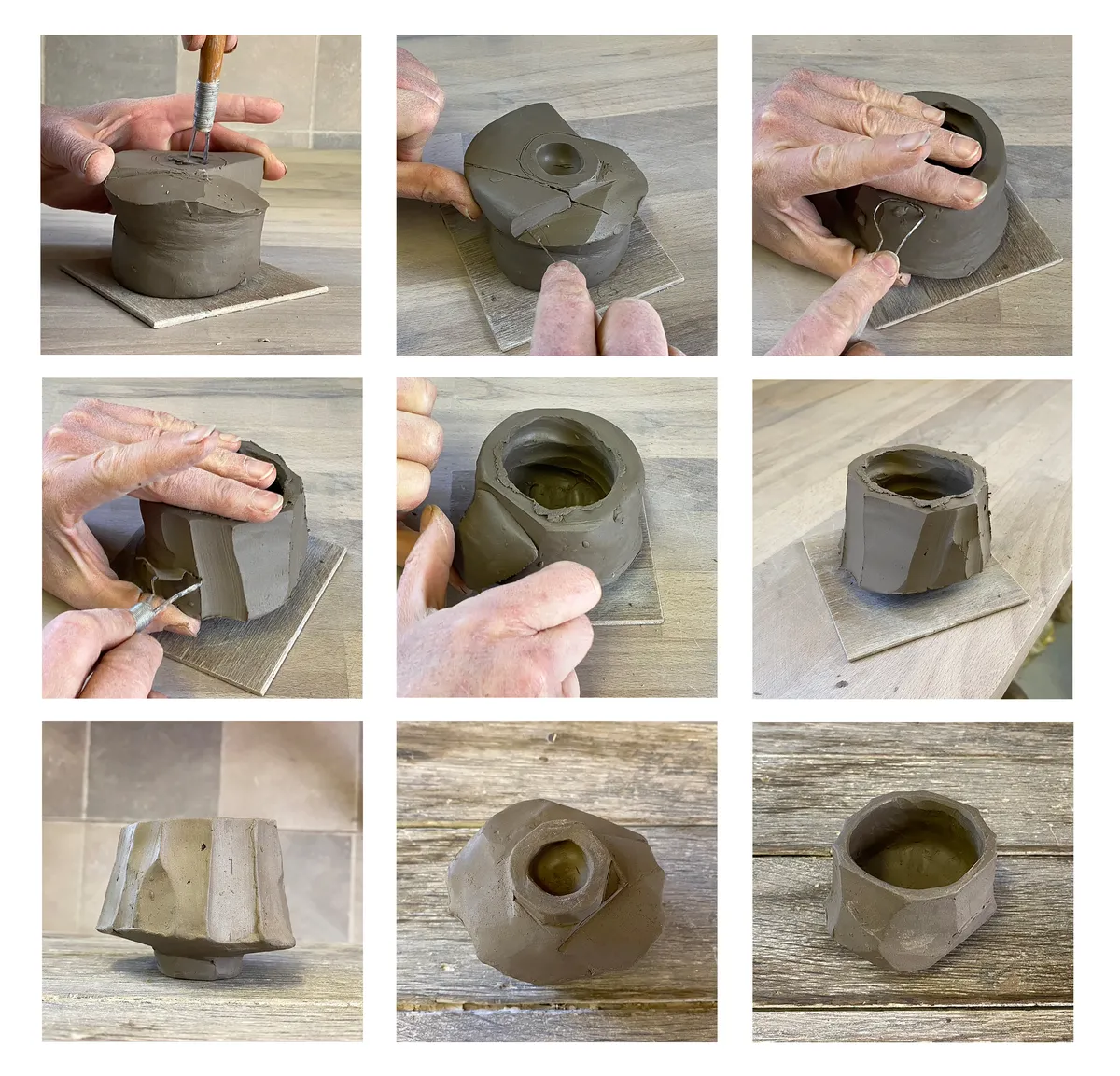Clay eyeballs can be a fun and creative project to work on, whether you’re an artist, a craft enthusiast, or simply looking for a unique way to decorate your home. These realistic-looking eyeballs can be made from a variety of materials, but clay is one of the most popular and accessible options.
With just a few simple tools and some basic knowledge of sculpting techniques, you can create your own custom-made clay eyeballs that will look like they were plucked straight out of a creature’s head. In this guide, we’ll walk you through the step-by-step process of how to make clay eyeballs, from choosing the right materials and tools to sculpting and painting your finished creation.

Whether you want to make a set of eyeballs to use as props for a Halloween costume or simply to add a touch of quirkiness to your home decor, this tutorial will provide you with everything you need to get started. So, let’s dive in and learn to make clay eyeballs!
Table of Contents
Materials You Need
Before we begin, you will need the following materials:
- Air-dry clay
- Acrylic paints in white, black, and yellow
- Clear gloss varnish
- Small paint brushes
- Toothpick
- Plastic wrap
7 Easy Step Guide How To Make Clay Eyeballs
Step 1: Create a Base
Firstly, take a small amount of air-dry clay and roll it into a ball shape. Then, press the ball onto a flat surface to make a slightly flattened base. If you like, you can make a few different sizes of bases in order to have various-sized eyeballs.

To make a larger base, use a larger amount of clay and flatten it further. However, if you want to make a smaller base, use a small amount of clay and flatten it less. Although it might be difficult at first, remember to keep the base round and even.
Step 2: Make an Iris
Next, take a small amount of the same clay and roll it into a cylinder shape. Then, flatten it slightly and use a toothpick to make a hole in the center. This hole should be big enough to show the base of the eyeball.
Use your fingers to shape the clay into an iris, forming lines of color and texture. Make sure that the bottom of the eye remains visible. You can also use the toothpick to add extra details, like veins and pupil shapes. Once you are satisfied with your iris, set it aside to dry.
Step 3: Attach Iris to the Base
Place the iris on top of the base and press it down gently. Then, use your fingers to blend the edges of the iris into the base, creating a seamless connection. Once complete, use the toothpick to make tiny, shallow holes in the iris for a more realistic eye shape.
While creating the holes, be careful not to go too deep and create a hole in the eyeball. To make the iris look more realistic, use a tiny brush or toothpick to apply darker colors to areas you want to be emphasized. Although the eyeball will still be clay, it should look more defined and realistic when you are finished.
Step 4: Create the Pupil
Now, take a tiny piece of black clay and roll it into a ball shape. Press it onto the center of the iris and use the toothpick to create a small indentation in the center of the pupil. This will give your eyeball a more realistic look.
You can also use the toothpick to create textures and patterns on the pupil for added dimension. The pupil should be slightly smaller than the size of the iris. If you prefer, you can use a black marker to draw in the pupil instead of using clay. While not as realistic, this is a much faster way to create an eyeball.

Step 5: Add Detail
Using the toothpick, create some lines on the iris to make it look more realistic. You can also add some veins using a thin paintbrush and some blue paint. If you want, you can add a black dot at the center of the iris to make it look more realistic.
While you are at it, you can also add some texture to the eyeball by drawing circles and lines with a toothpick. When you are done with the detail, let the clay eyeball dry completely or bake it following the instructions on your clay package. Once it is cool and dry, you can proceed to the next step.
Step 6: Paint the Eyeball
Once the clay has dried, use white paint to cover the entire surface of the eyeball. Then, use a small brush and yellow paint to create a thin ring around the pupil. Finally, use black paint to paint the pupil. Allow the eyeball to dry before moving on to the next step.
While the paint is drying, you can also apply small dots of white and paint to create a unique iris pattern. You could even add a few highlights of red or blue paint to make the eyeball look even more realistic. Once the paint is completely dry, your clay eyeball is ready to be used. Enjoy creating your own unique clay eyes!
Step 7: Varnish
After the paint has dried, apply a clear gloss varnish to the eyeball. This will give it a shiny, wet appearance. Allow the varnish to dry completely before handling. This will also help protect the paint and make it last longer.
While a brush can be used to apply the varnish, this task may be easier with a spray varnish. If using a brush, make sure it is clean and free of debris. However, take care not to overwork the varnish, as this can cause streaks and brush marks. If using a spray varnish, apply it in a well-ventilated area and wear protective clothing.

Tips and Tricks
- Use plastic wrap to cover your work surface. This will prevent the clay from sticking to the surface and make it easier to clean up.
- Use a toothpick to create realistic-looking veins on the iris.
- If the clay becomes too dry, you can add a small amount of water to make it more pliable.
- Use different colors of paint to create eyeballs with different colors.
Things to Consider When Making Clay Eyeball:
1. Choose the Right Kind of Clay.
There are several types of modeling clay available, and each type has its own set of characteristics that will affect the finished product. Choose a clay that is easy to work with and has good durability, such as polymer clay or air-dry clay.
2. Create the Shape You Want.
Once you have chosen your clay, begin shaping it into an eyeball shape. Make sure to use even pressure when rolling out the clay so it is an even thickness. Use tools such as a clay tool set or even a toothpick to shape the iris and pupil of the eye.
3. Add Details To Your Eyeball.
To make your eyeball look more realistic, you can add details like veins, eyelashes, and wrinkles with paint or markers. You can also add texture to the eyeball with a brush or other texturing tools.

4. Choose Your Color Palette.
Clay eyeballs can be painted any color you like, so choose colors that match your desired look. For example, if you want to make a realistic-looking eye, consider using light and dark shades of brown. If you want to make a creepy, eerie eye, you can use bright colors like yellow or green.
Conclusion
In conclusion, making clay eyeballs can be a rewarding and enjoyable project for both beginners and experienced sculptors. By following the steps outlined in this guide, you can create a set of unique and realistic-looking eyeballs that can be used for a variety of purposes.
Whether you choose to make them as a spooky addition to your Halloween decorations or as a quirky piece of home decor, your clay eyeballs are sure to be a conversation starter.
Don’t be afraid to experiment with different colors and textures or to add your own personal touches to make them truly one-of-a-kind. Be sure to follow all instructions on how to make clay eyeballs carefully, and always consult an expert when in doubt. Happy crafting!
FAQs
What type of clay is best for making eyeballs?
Air-dry clay is the best type of clay for making eyeballs as it is easy to work with and dries quickly.
Can I use different colors of paint to make different-colored eyeballs?
Yes, you can use different colors of paint to create eyeballs with different colors.
Can I use a different type of varnish instead of clear gloss varnish?
Yes, you can use any type of varnish that you prefer.
Can I add more detail to the eyeballs?
Yes, you can add more detail to the eyeballs by using a thin paintbrush and adding more veins or other details.





